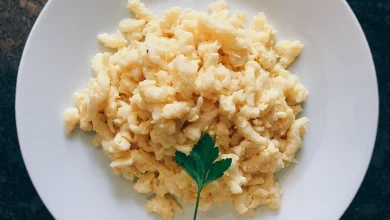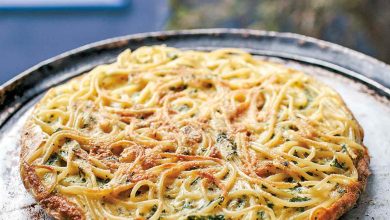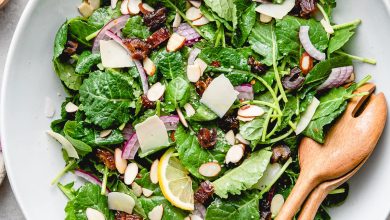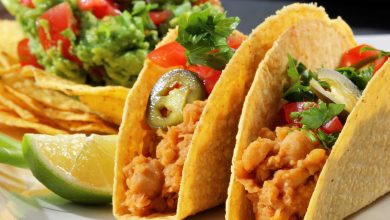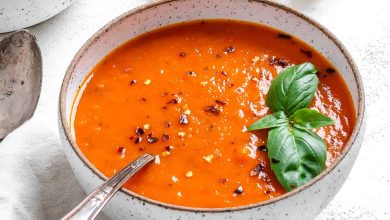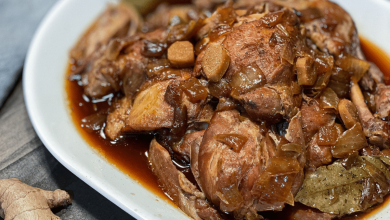🥓🍝 Bacon and Basil Sauce for Pasta 🌿🍽️
Bacon and Basil sauce for pasta is a delicious and savory sauce that combines the smoky flavor of bacon with the freshness of basil. This sauce is popular in Italian and Mediterranean cuisine and is a favorite among pasta enthusiasts. It’s a simple yet flavorful option to enhance your pasta dishes.
📜 History:
The origins of this sauce are deeply rooted in Italian culinary traditions, where the use of fresh ingredients is highly valued. While there isn’t a specific documented history for this sauce, bacon has been used in Italian cooking for centuries, and basil is a staple herb in many Italian dishes. The fusion of these ingredients into a sauce for pasta likely evolved over time as cooks experimented with flavors.
🥓🌿 Components:
- Bacon: Choose good-quality bacon slices or bits. The smoky, salty flavor of bacon is essential to this sauce.
- Fresh Basil: Fresh basil leaves provide a burst of herbaceous and aromatic flavor.
- Olive Oil: Used for sautéing and to give the sauce a silky texture.
- Garlic: Adds a savory and aromatic element to the sauce.
- Red Pepper Flakes (optional): If you like a bit of heat, red pepper flakes can be added to taste.
- Parmesan Cheese (optional): To sprinkle on top for extra flavor.
👩🍳 Steps to Prepare:
-
Cook the Bacon: In a large skillet, cook the bacon over medium heat until it becomes crispy. Remove it from the skillet and place it on paper towels to drain. Once it cools, crumble or chop it into small pieces.
-
Sauté Garlic and Basil: In the same skillet, add a little olive oil and minced garlic. Sauté for a minute until fragrant.
-
Add Basil: Tear or chop fresh basil leaves and add them to the skillet. Sauté for a couple of minutes until the basil wilts and releases its aroma.
-
Combine Bacon: Return the crumbled bacon to the skillet and mix it with the garlic and basil.
-
Season: If you like a bit of heat, add red pepper flakes to taste and season with salt and black pepper.
-
Toss with Pasta: Cook your favorite pasta according to the package instructions, and then toss it in the bacon and basil sauce. Make sure the pasta is well coated with the sauce.
-
Garnish and Serve: Optionally, sprinkle freshly grated Parmesan cheese on top for added flavor. Serve your bacon and basil pasta hot.
⏰ Preparation Time:
The entire process to prepare this delightful pasta sauce should take about 20-30 minutes. It’s a quick and straightforward recipe, making it perfect for a weeknight dinner.
Enjoy your Bacon and Basil Sauce for Pasta! 🥓🌿🍝🍴😋
Certainly! Here are the nutrition facts and some health information for Bacon and Basil Sauce for Pasta:
🍽️ Nutrition Facts (Approximate Values):
- Serving Size: 1/2 cup of sauce
- Calories: Approximately 150-200 calories
- Total Fat: Approximately 12-15 grams
- Saturated Fat: Approximately 4-6 grams
- Cholesterol: Approximately 20-30 milligrams
- Sodium: Approximately 400-600 milligrams
- Carbohydrates: Approximately 4-6 grams
- Fiber: Approximately 1-2 grams
- Sugars: Approximately 1-2 grams
- Protein: Approximately 8-10 grams
🌿 Health Information:
-
Moderation: Bacon and Basil Sauce for Pasta can be delicious but is relatively high in saturated fat and sodium. Enjoy it in moderation as part of a balanced diet.
-
Protein Source: This sauce can provide a good amount of protein, especially when paired with pasta. Protein is essential for muscle and tissue repair.
-
Fiber: While not particularly high in fiber, you can increase the fiber content by using whole wheat or whole grain pasta, which is a healthier choice.
-
Saturated Fat: Bacon contributes to the sauce’s saturated fat content. Excessive consumption of saturated fat can increase the risk of heart disease. It’s a good idea to balance this dish with other lower-fat meals.
-
Sodium: The sodium content can be relatively high due to bacon and any added salt. High sodium intake is associated with high blood pressure, so consider reducing the amount of salt used in the recipe.
-
Fresh Basil: On the positive side, fresh basil is rich in vitamins and antioxidants. It can provide vitamin K, vitamin A, and other essential nutrients.
-
Variations: You can make this sauce healthier by using leaner cuts of bacon or turkey bacon, and by reducing the amount of added salt. You can also add more vegetables like cherry tomatoes or spinach for added nutrients and flavor.
Remember that the nutrition facts can vary based on the specific ingredients and portion sizes you use, so it’s a good practice to check the labels on your specific ingredients for more accurate information. Additionally, if you have specific dietary concerns or health conditions, it’s advisable to consult with a healthcare professional or nutritionist for personalized guidance.



